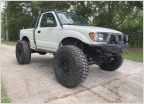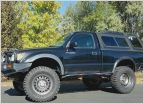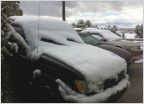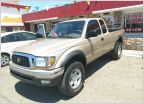-
Welcome to Tacoma World!
You are currently viewing as a guest! To get full-access, you need to register for a FREE account.
As a registered member, you’ll be able to:- Participate in all Tacoma discussion topics
- Communicate privately with other Tacoma owners from around the world
- Post your own photos in our Members Gallery
- Access all special features of the site
AdventureTaco - turbodb's build and adventures
Discussion in '1st Gen. Builds (1995-2004)' started by turbodb, Apr 4, 2017.
Page 239 of 281
Page 239 of 281


 Allenfab's 95 Tacoma build
Allenfab's 95 Tacoma build The Expo Golf Cart
The Expo Golf Cart FATS builds a Taco
FATS builds a Taco Lefty's golden taco.
Lefty's golden taco. Old but gold 4x4 swap
Old but gold 4x4 swap Tanya the Toyota Tacoma - Cattywampus '04 Ext Cab
Tanya the Toyota Tacoma - Cattywampus '04 Ext Cab






































